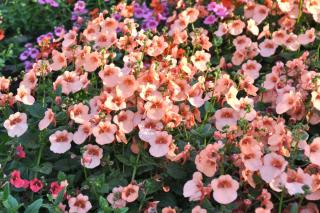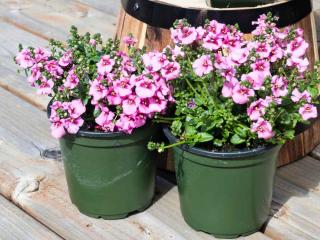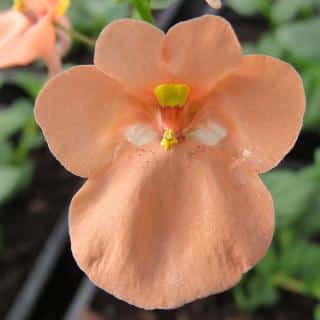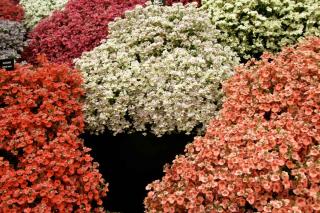

Diascia is a very cute flower that blooms all summer long and even deep into fall.
Diascia facts, a short list
Name: Diascia
Family: Scrophulariaceae
Type: annual, perennial: D. fetcaniensis
Height: 10 to 16 inches (25 to 40 cm)
Exposure: sun or part sun
Soil: rather rich – Flowering: early summer → mid-fall
Caring for these plants from planting to blooming doesn’t require much effort and their decorative effect is guaranteed.
It is recommended to plant diascia in spring, after any risk of freezing is over, because it doesn’t survive freezing at all. Wait for April or May, depending on the area, to plant your diascia.
 Whether the plant is in a container or in the ground, select a sun-filled spot for maximum blooming.
Whether the plant is in a container or in the ground, select a sun-filled spot for maximum blooming.
Diascia grows very well in pots, especially smaller-growing varieties. Make sure of the following:
 proper drainage thanks to a hole at the bottom of the pot (so any excess water can drain away)
proper drainage thanks to a hole at the bottom of the pot (so any excess water can drain away)To propagate your diascia, it’s possible to sow seeds or to prepare cuttings from stems.
Sowing is best when performed in spring (March and April), in a sheltered place if temperatures don’t yet exceed 60°F (15°C).
You can plant directly in the ground starting in May, or transplant your seedlings to garden boxes and pot arrangements.
This is a plant that is often successfully multiplied with the most common method for preparing cuttings.
Preparing diascia cuttings is best done in spring or in fall.
 To enhance flower-bearing, remove wilted flowers regularly.
To enhance flower-bearing, remove wilted flowers regularly.
During spells of high temperatures, feel free to water in the evening to avoid having your snapdragon dry out.
After the first frost spells, you can pull out the dascias that can’t cope with the cold.
D. fetcaniensis is hardy and can be left in the ground over the winter. Simply cut it back in the following spring.
 Native to South Africa, diascia is a plant that is grown as an annual in temperate climates with cold winters, because it cannot survive freezing.
Native to South Africa, diascia is a plant that is grown as an annual in temperate climates with cold winters, because it cannot survive freezing.
Only Diascia fetcaniensis is hardy and can stay in the ground in winter.
This flower offers a magnificent bloom all summer long, and will be at its best in the sun and in fertile, well drained soil.
Diascias are magnificent in garden boxes or pots, and blend in well with other flowers in a flower bed. Their dense bearing will produce nice colorful spheres of flowers.
The diascia flower is perfectly suited to being grown in suspended pots because its leaves and flowers dangle and tumble along the side like a waterfall.
There are a great many of them, but some stand out more than others thanks to their remarkable blooming.
These noteworthy diascia varieties are:
Flower your garden, balcony or terrace with Diascia for a landscape that is full of colors!